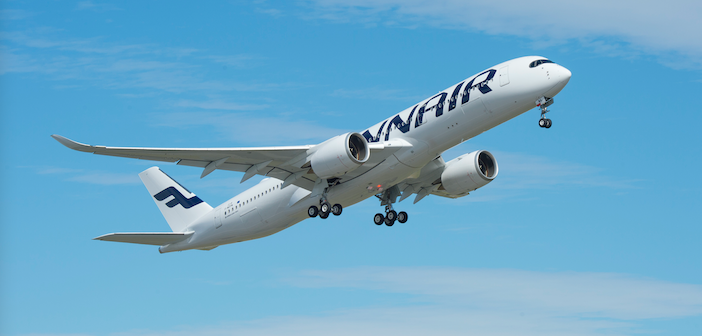Finnair weighs in with A350 MTOW to lighten the financial load

Finnair has modified 10 of its flagship A350-900s (it has 17, plus two on order) to be able to carry more customers and cargo as it continues to increase capacity to meet growing demand for its Asian routes amid difficulties caused by the closure of Russian airspace.
The modifications are primarily on aircraft that regularly serve Finnair’s Helsinki to/from Seoul and Tokyo flights, two of the carrier’s longer intercontinental routes. These routes have been made longer following the closure of Russian airspace, which has forced Finnair to replan its flights and detour around Russia, consuming more fuel than used previously. That extra fuel meant a trade-off had to be made with cargo and passenger capacity.
Thus the Finland-based carrier has worked with Airbus to increase the maximum take-off weight (MTOW) for the selected aircraft, enabling them to carry more customers and cargo – and more fuel – to fly the longer flight times between Finland and South Korea and Japan – as well as increasing the economic efficiency of each flight. The modifications were completed during the two first weeks in January, and operation with the new MTOW began on 18th January.
The previous MTOW of these Finnair A350s was 268 tonnes, which has been increased to 275 tonnes for five of the 10 selected aircraft, and 280 tonnes for the remaining five.
The maximum take-off weight increase is expected to increase total capacity by up to eight tonnes, depending on the aircraft’s respective maximum take-off weight, route profile, flight time and weather conditions.
The airplane and fuel together make up most of an aircraft’s weight, followed by customers, with a full Finnair A350 weighing approximately 24,000kg. Checked-in bags typically weigh an additional 5,500kg, with cargo adding an extra 15,000kg.
The modifications also involve minor changes and updates to aircraft’s software and placards and manuals, carried out in cooperation with Airbus.
These modifications form part of Finnair’s strategy to restore profitability and increase payloads, in spite of airspace closures and increased flight times.
Leena Niemi, Finnair’s compliance manager for technical operations, said of the programme: “Usually we do everything we can to make our aircraft lighter, but for our flights to Tokyo and Seoul we’ve increased their maximum take-off weight to fly around Russia and meet the demand for increased customers, cargo and kerosene.
“We worked with Airbus to make the modifications to 10 of our A350s to increase their maximum take-off weight while ensuring the safety and security of our aircraft and customers remained our number one priority.
“In addition, the weight and balance data for the modified aircraft have been updated, the noise certificates of the aircraft have been renewed, and the aircraft maintenance programme and life limits of the main landing gear parts have been updated,” she added.
The increased MTOW sill not present difficulties for Finnair’s operations and flight staff, as the aircraft software compensates for the centre of gravity change and maintains the same handling characteristics. Each aircraft’s new MTOW is being taken into account by experts at Finnair’s daily flight operations in their Helsinki hub.
